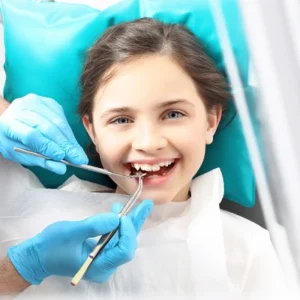Sleep apnea is a serious condition that affects breathing during sleep. It causes pauses in breathing, leading to poor sleep quality and long-term health risks. Many people think treatment is limited to CPAP machines or surgery, but orthodontics sleep apnea treatments are gaining attention. Certain orthodontic procedures can improve airflow and reduce symptoms.
Understanding how orthodontic treatments impact sleep apnea can help those looking for alternative solutions. The connection between jaw structure, airway space, and breathing is more significant than most realize. By addressing misalignment, orthodontic care may provide relief for some individuals struggling with sleep apnea.
What Is Sleep Apnea and Why Is It a Concern?
Types of Sleep Apnea
Sleep apnea occurs when breathing repeatedly stops and starts during sleep. The condition has three main types:
- Obstructive Sleep Apnea (OSA) – The most common type. It happens when throat muscles relax and block the airway.
- Central Sleep Apnea – The brain fails to send the right signals to control breathing.
- Complex Sleep Apnea Syndrome – A combination of obstructive and central sleep apnea.
Common Symptoms
Many people have sleep apnea without realizing it. Symptoms often go unnoticed until someone points them out. Some key signs include:
- Loud, frequent snoring
- Gasping or choking while sleeping
- Pauses in breathing during sleep
- Daytime fatigue and difficulty focusing
- Morning headaches
- Dry mouth upon waking
Ignoring these symptoms can lead to more serious health problems.
Health Risks of Untreated Sleep Apnea
When sleep apnea goes untreated, it puts extra strain on the body. Lack of oxygen and poor sleep quality increase the risk of:
- High Blood Pressure – Frequent drops in oxygen levels force the heart to work harder.
- Heart Disease and Stroke – Sleep apnea is linked to irregular heart rhythms and cardiovascular issues.
- Diabetes – Poor sleep affects insulin sensitivity, raising the risk of type 2 diabetes.
- Mood Disorders – Anxiety, depression, and irritability are common due to disrupted sleep.
- Memory and Cognitive Issues – Chronic sleep deprivation impacts brain function.
Recognizing these risks highlights the importance of seeking effective treatment. While CPAP therapy is often the first recommendation, orthodontic solutions may offer another path for some patients.





